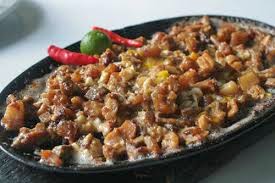It is a no brainer that Filipino cuisine is one of the bests. It has made a name globally that chefs all over the world serve this cuisine in their restaurants. Nevertheless, just like any other recipes, it has its own secret. While most food lovers can cook up something close to an authentic Filipino dish, that unique taste is quite a catch.
So, what makes this cuisine different? How does it stand out from the rest of the cuisines out there? Well, nothing really. This cuisine is hardly definable since its roots come from a mishmash of cultures. The Philippine Cuisine, however, sets apart from the others (especially Asian cuisines) because of the dense usage of spices.
If other cuisines choose subtle flavorful hints, Filipinos are the other way around. They like to go big. It’s like they want the spices to go extinct. There is no wonder that this cuisine is unlike any others.
Below are few of the commonly used spices:
1.) Garlic and Onions – Just like Romeo and Juliet, these two go together. From meat to fish (and even vegetable) dishes, these two can spice up the flavor. Oh, and by the way, remember to wash onions with water before cutting. Some say it can stop you from crying.
2.) Lemongrass – Its leaves and stalks have strong odor. The leaves have a small pinch of citrus, making it a perfect ingredient for soups, teas, meat sauces and even gravy.
3.) Bay Leaf – This is an exact fit for Philippine recipes. The leaf itself is suitable for dips and sauces to dishes like Mechado and Menudo. Usually, the preferred ones are the dried Bay Leaves. The dried ones add an exceptional taste.
4.) Chili – Nothing spices any Filipino food better than chili peppers. As a matter of fact, people in the Bicol region are known for adding massive chilies to their dishes. Their Bicol Express is undeniably the most popular.
5.) Ginger – Most Asian cuisines use ginger. There’s no doubt Philippines is one of them. Filipinos love to add ginger to soups and stew dishes like chicken stew (tinola). Ginger is for the love of aroma and flavor.
Generosity in spices makes the Philippine dishes so much different. So when cooking Filipino food recipes, remember to spice up a bit!
So, what makes this cuisine different? How does it stand out from the rest of the cuisines out there? Well, nothing really. This cuisine is hardly definable since its roots come from a mishmash of cultures. The Philippine Cuisine, however, sets apart from the others (especially Asian cuisines) because of the dense usage of spices.
If other cuisines choose subtle flavorful hints, Filipinos are the other way around. They like to go big. It’s like they want the spices to go extinct. There is no wonder that this cuisine is unlike any others.
Below are few of the commonly used spices:
1.) Garlic and Onions – Just like Romeo and Juliet, these two go together. From meat to fish (and even vegetable) dishes, these two can spice up the flavor. Oh, and by the way, remember to wash onions with water before cutting. Some say it can stop you from crying.
2.) Lemongrass – Its leaves and stalks have strong odor. The leaves have a small pinch of citrus, making it a perfect ingredient for soups, teas, meat sauces and even gravy.
3.) Bay Leaf – This is an exact fit for Philippine recipes. The leaf itself is suitable for dips and sauces to dishes like Mechado and Menudo. Usually, the preferred ones are the dried Bay Leaves. The dried ones add an exceptional taste.
4.) Chili – Nothing spices any Filipino food better than chili peppers. As a matter of fact, people in the Bicol region are known for adding massive chilies to their dishes. Their Bicol Express is undeniably the most popular.
5.) Ginger – Most Asian cuisines use ginger. There’s no doubt Philippines is one of them. Filipinos love to add ginger to soups and stew dishes like chicken stew (tinola). Ginger is for the love of aroma and flavor.
Generosity in spices makes the Philippine dishes so much different. So when cooking Filipino food recipes, remember to spice up a bit!





















